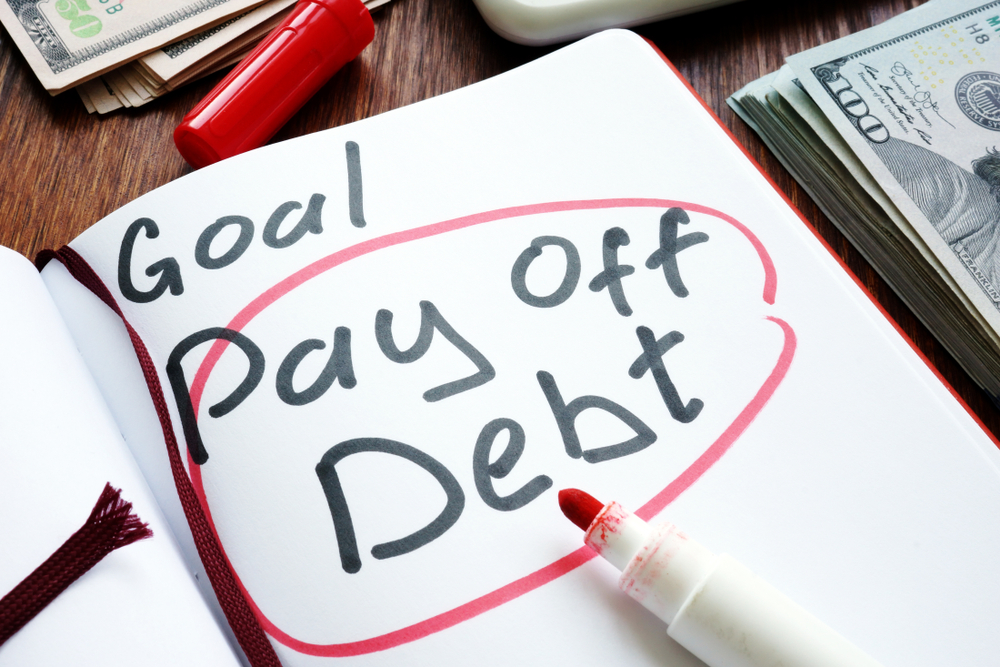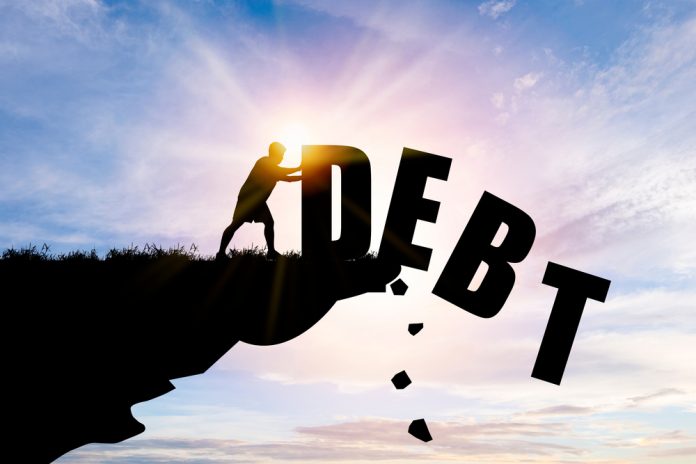So, you want to buy your first home, however, you have some debt that feels like an immovable mountain standing between you and your dream. Whether it’s credit card balances, student loans, or car payments, that looming debt can make homeownership seem out of reach. But here’s the truth: while the journey to becoming debt-free isn’t always easy, it’s far from impossible. With the right mindset and a clear plan, you can tackle your financial challenges head-on and open the door to your first home.
Paying off debt is more than just a step toward financial freedom; it’s about building a stable foundation for your future. By reducing or eliminating debt, you’re not only improving your credit score but also increasing your borrowing power and demonstrating to lenders that you’re a responsible candidate for a mortgage. Even more importantly, taking control of your finances provides peace of mind and confidence as you take on the responsibilities of homeownership.
The key is to break the process down into manageable steps. While it may feel overwhelming at first, every small win brings you closer to your goal. And let’s face it—buying a home is one of the biggest investments you’ll make in your life. By starting today, you’re setting yourself up for long-term success and financial security.
Here are nine proven strategies to help you pay off debt and pave the way to becoming a homeowner. Let’s get started!
1. Take an Honest Look at Your Debt
First things first, let’s consider the elephant in the room: your debt. It can feel intimidating to confront, but this is an essential step toward financial freedom. You need to lay everything out in front of you to get a clear picture of where you stand. This means gathering all your financial statements—credit card bills, loan balances, and any other outstanding obligations—and putting them into a single document.
Start by organizing this information in a way that makes sense to you. If you’re tech-savvy, a spreadsheet can be incredibly helpful. Create columns for balances, interest rates, minimum payments, and due dates. If you prefer a more hands-on approach, print everything out and use a physical ledger to track your debts. The goal here is to create a master list that gives you a bird’s-eye view of your financial situation.
Once you have your list, assess it honestly. How much do you owe in total? What are your monthly obligations? Are there debts with sky-high interest rates eating away at your income? Understanding these details is crucial for creating a realistic repayment strategy. Remember, you can’t tackle a problem until you fully understand it.
Finally, take a moment to reflect on how this debt accumulated. This isn’t about blame but understanding. Were there emergencies, overspending, or simply a lack of financial planning? Identifying the root cause can help you avoid falling into the same patterns in the future. Facing your debt might feel uncomfortable, but it’s the first step toward taking control and moving closer to your dream of homeownership.
2. Create a Budget That Works
Now that you have an understanding of your debt, the next part is setting up a budget that works for you. A solid budget is your roadmap to financial freedom, helping you manage your income and prioritize debt repayment. Without a clear plan for where your money goes, it’s easy to lose track of spending and delay progress.
Begin by listing all your income sources and fixed expenses, such as rent, utilities, groceries, and insurance. Once you’ve accounted for the essentials, allocate funds for discretionary spending and, most importantly, debt repayment. Your goal is to ensure that every dollar has a purpose and contributes to your financial goals. 
If you’re unsure where to start, budgeting tools like Mint or YNAB (You Need a Budget) can make the process easier by tracking expenses and identifying areas where you can cut back. For example, you might discover that a subscription service you rarely use or frequent dining out could be eliminated or reduced, freeing up funds for debt payments.
A successful budget should be realistic and flexible. Life happens, and unexpected expenses may arise, so leave a little wiggle room to handle the unexpected without derailing your progress. The key is consistency—review and adjust your budget regularly to stay on track.
Remember, a well-thought-out budget not only helps you tackle debt but also builds good financial habits that will serve you well as a homeowner. It sets the foundation for managing future expenses, such as mortgage payments, maintenance costs, and property taxes, ensuring long-term stability and success.
3. Tackle High-Interest Debt First
With your budget in place, it’s time to focus on your repayment strategy. One of the most effective ways to pay off debt is by tackling accounts with the highest interest rates first—a method commonly known as the avalanche strategy. High-interest debts, like credit cards, can drain your finances if left unchecked, as the compounding interest makes it harder to reduce the principal balance over time.
Start by allocating any extra funds in your budget toward the account with the highest interest rate while continuing to make minimum payments on your other debts. Once that high-interest account is paid off, redirect those payments to the next highest-interest account. This approach not only reduces the total interest you’ll pay but also accelerates your overall progress. 
Why focus on high-interest debt first? Because it saves you the most money in the long run. By reducing the amount of interest accrued, you’ll have more resources to put toward your remaining debts and eventually your down payment for a home.
Connecting this strategy with your budget helps ensure you remain disciplined. Review your progress regularly, celebrate milestones, and adjust your plan as needed. Combined with the organization from Section 1 and the budgeting framework from Section 2, tackling high-interest debt becomes a focused and achievable goal, bringing you one step closer to financial freedom and homeownership.
4. Stop Accumulating Debt
Considering you have set your budget and started paying off high-interest debt, the next crucial step is to stop adding to the pile. If you continue to accumulate debt while trying to pay it off, you’ll find yourself in a frustrating cycle that’s hard to break. This is the time to make a firm commitment to living within your means.
Start by identifying habits or circumstances that lead to new debt. Is it impulsive spending? Unnecessary credit card use? Addressing these patterns is key. Consider putting your credit cards away—literally. Some people choose to freeze them in a block of ice, store them in a secure place, or even cut them up entirely. If online shopping is a weakness, remove saved card information from your accounts to make purchases less convenient.
Creating a financial buffer is another essential step. Build an emergency fund, even if it’s a modest amount to start with. Having savings set aside for unexpected expenses, like car repairs or medical bills, can prevent you from resorting to credit cards in a pinch. Aim to save at least $500 initially, then gradually increase it as your debt decreases.
Establishing a cash-only policy for discretionary spending can also help. Withdraw a set amount of money each week for non-essential purchases and stick to it. This tangible method of tracking your spending makes it easier to resist overspending.
Remember, halting new debt doesn’t mean depriving yourself of all enjoyment. Budget for occasional treats or small indulgences, so you don’t feel like you’re sacrificing everything. The key is to do so within the limits of your financial plan. By stopping the accumulation of new debt, you’ll maximize the impact of your repayment efforts and move closer to achieving your goal of debt-free homeownership.
5. Reduce Unnecessary Expenses
Now that you’ve stopped adding new debt, it’s time to take a close look at your spending habits and identify where you can cut costs. Think of this as trimming the financial fat—small adjustments that can free up significant resources for debt repayment.
Start by reviewing your discretionary spending. Cancel unused subscriptions, such as streaming services or gym memberships you rarely use. Look for areas where you can downsize, like switching to a cheaper phone plan or cutting out that daily coffee shop visit. Even seemingly minor savings can add up over time.
Next, focus on your day-to-day expenses. Cooking meals at home instead of dining out can save hundreds of dollars each month. Planning grocery shopping around sales and using coupons or cashback apps can make a noticeable difference in your food budget. Additionally, consider carpooling, using public transportation, or consolidating errands to save on gas.
For larger expenses, such as insurance or utilities, shop around for better rates. Many providers offer discounts for bundling services or switching to paperless billing. Negotiating with your current providers can also yield savings—sometimes all it takes is asking.
Keep track of the money you save by cutting back, and redirect those funds toward your debt payments. This step not only accelerates your progress but also reinforces positive spending habits that will benefit you long after you’ve achieved your goal of debt-free homeownership.
Remember, reducing unnecessary expenses isn’t about deprivation—it’s about prioritization. By making thoughtful choices about where your money goes, you’ll create more room in your budget for what truly matters: securing a strong financial future and, ultimately, the keys to your new home.
6. Boost Your Income
Now that you’ve cut unnecessary expenses and optimized your budget, it’s time to explore ways to bring in more money. Increasing your income is a powerful way to accelerate debt repayment and build a financial cushion for future homeownership. Think of this step as expanding your resources to match your goals.
Start by leveraging your current skills or hobbies. Freelancing, consulting, or offering services like tutoring, writing, or graphic design can be done on your own schedule. Platforms like Upwork, Fiverr, or TaskRabbit are great places to find clients. If you have a creative skill, such as photography or crafting, consider selling your work on Etsy or through local markets.
For those looking for quicker options, picking up a part-time job or extra shifts at your current workplace can make a significant difference. Seasonal work, such as holiday retail or gig economy jobs like food delivery or ridesharing, can also provide immediate income boosts.
Another effective strategy is selling unused items. Declutter your home and list items on platforms like eBay, Facebook Marketplace, or Craigslist. You’ll not only free up space but also generate extra cash to put directly toward your debts.
As you increase your income, it’s important to stay disciplined. Allocate any additional earnings exclusively toward your debt repayment plan rather than expanding your spending habits. This focus ensures that your hard work translates into meaningful progress.
By boosting your income, you’re taking control of your financial situation and creating opportunities to achieve your goals faster. Combined with the groundwork laid by reducing expenses and stopping new debt accumulation, this step propels you even closer to financial freedom and homeownership.
7. Use Debt Repayment Strategies
Now that you’ve started cutting unnecessary expenses and generating additional income, the next step is to ensure your efforts are maximized by employing effective debt repayment strategies. These strategies provide a structured way to tackle your debt systematically and can be tailored to fit your financial situation and personality.
The two most popular methods are the avalanche and snowball strategies. The avalanche method focuses on paying off debts with the highest interest rates first. This approach minimizes the amount of interest you pay over time, making it the most cost-effective option. Start by using your extra funds to pay more than the minimum on your highest-interest account while maintaining minimum payments on others. Once the highest-interest debt is cleared, redirect your payments to the next highest, and so on.
Alternatively, the snowball method emphasizes starting with your smallest debt. Paying off a smaller balance quickly provides a psychological boost and a sense of accomplishment, motivating you to keep going. With this approach, allocate extra funds to the smallest balance first, then roll those payments into the next smallest once it’s paid off. 
Both methods have their merits, so choose the one that aligns best with your goals and temperament. If minimizing costs is your priority, go for the avalanche method. If you thrive on small wins and need motivation, the snowball method may be more effective.
Additionally, consider hybrid approaches or debt consolidation if it aligns with your situation. For example, consolidating high-interest debts into a lower-interest loan might simplify your repayment process while saving money. However, exercise caution with consolidation to avoid creating a new cycle of debt.
By incorporating these strategies into your repayment journey, you can ensure that every dollar you earn and save is working toward eliminating your debt. Combined with your disciplined budget, reduced expenses, and boosted income, these methods create a well-rounded approach that brings you closer to achieving financial freedom and securing your first home.
8. Sell What You Don’t Need
With your repayment strategy in motion, another practical way to accelerate debt payoff is by decluttering your life and selling items you no longer need. Honestly every couple years I will purge out my clothes and belongings, if it’s not something I have used in the last 6-8 months… it’s adios! This not only helps you generate extra income but also simplifies your living space—a bonus when you’re preparing to buy your first home.
Start by going through your belongings with a critical eye. Items like unused electronics, outdated furniture, or clothes you no longer wear can find a new home through platforms like eBay, Facebook Marketplace, or Craigslist. For larger items, hosting a garage sale is a great way to declutter while engaging with your community.
Don’t overlook specialty items. Tools, sports equipment, and collectibles often hold value and can sell quickly. Apps like OfferUp and Nextdoor make it easy to connect with local buyers. If you have designer clothing or accessories, consider consignment shops or dedicated resale platforms like Poshmark or ThredUp.
As you sell items, allocate the proceeds directly to your debt repayment plan. Even small amounts can add up over time, making a meaningful impact on your balances. Plus, the act of decluttering can help you feel more in control of your finances and your life as you take this journey toward homeownership.
Remember, selling unused items isn’t just a one-time event—it’s a mindset. Periodically reassess your belongings to ensure you’re maximizing their value. This simple yet effective strategy can keep your momentum going and bring you closer to financial freedom.
9. Seek Professional Help Wisely
Sometimes, managing debt can feel overwhelming, even with the best strategies in place. This is where seeking professional help can be a game-changer—if done wisely. The key is to choose reputable resources that align with your goals and genuinely aim to help you get back on track.
Nonprofit credit counseling agencies are an excellent place to start. These organizations offer free or low-cost services to help you create a manageable repayment plan, negotiate with creditors, and provide educational resources to improve your financial habits. Look for agencies accredited by the National Foundation for Credit Counseling (NFCC) or the Financial Counseling Association of America (FCAA).
Debt consolidation may also be an option if you have multiple high-interest debts. By combining them into a single loan with a lower interest rate, you can simplify your payments and potentially save money. However, it’s essential to read the fine print and avoid scams or predatory lenders. Always choose a reputable financial institution and ensure that the consolidation loan truly benefits your situation.
Avoid debt settlement companies that promise to erase your debt for a fee. These services often come with significant risks and can leave you in a worse financial position. Instead, focus on proven strategies and trustworthy resources to guide you.
Professional help should complement, not replace, your efforts. Use it as a tool to enhance your repayment journey, and remain actively involved in the process. By taking advantage of expert guidance, you can navigate complex financial challenges with confidence and continue moving closer to your dream of homeownership.
Why Paying Off Debt Matters for First-Time Homebuyers
Debt can significantly impact your ability to qualify for a mortgage. Lenders assess your debt-to-income ratio (DTI) to determine your borrowing power. By reducing your debt, you can lower your DTI, improve your credit score, and increase your chances of securing favorable mortgage terms.
Additionally, becoming debt-free frees up more of your income for future home expenses, such as repairs, furnishings, and property taxes. A strong financial foundation not only makes buying a home more achievable but also ensures you can maintain it comfortably.
Closing things off…
Paying off debt may seem daunting, but with focus and persistence, it’s entirely possible. By following these nine strategies, you can take control of your finances, improve your creditworthiness, and move closer to your dream of homeownership. Start today, stay consistent, and remember: every step you take brings you closer to financial freedom and your first set of house keys.


